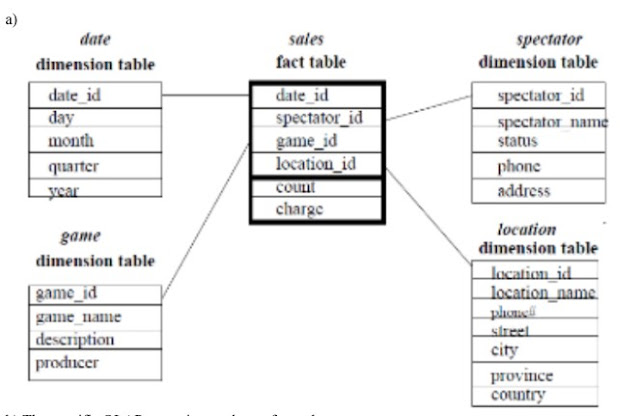Define Decentralization. State any two advantages and disadvantages of decentralization.
Concept of Decentralization
Decentralization may be defined as the dispersion (distribution) of functions and powers from a central authority to regional and local authorities. Under it, the decision making authority is delegated to lower levels. It distributes authority and responsibility to different levels of an organization. It is particularly effective where important knowledge is dispersed throughout the organization and responsiveness to the changing needs of different customer segments is important.
Some of the major definitions of decentralization are given below.
Koontz and Weihrich"Decentralization is the tendency to disperse decision making authority in an organized structure.
Louis A. Allen"Decentralization is the systematic and consistent delegation of authority to the level where the work is performed.
Dale S. Beach"Decentralization means placing the authority and decision making power as close as possible to the level at which the work is done.
In summary, decentralization is the transfer of decision making power from upper to lower level.
The following conditions are essential for the success of decentralization.
• Supportive top management Large, diversified and complex organization
• Dispersed organizational activities
• High capacity of lower level
• Low cost of decentralization Effective planning and control
ADVANTAGES OF DECENTRALIZATION
Decentralization is the philosophy of systematic and scientific delegation of authority to the decision making level. It facilitates following advantages:
1. Quick decision: Decentralization facilitates fast and better decision as decision making authority is given to the unit managers where the decision need to be implemented. Decisions made by functional managers become accurate which helps for organizational growth and diversification. Prompt decisions in business are more important to grab the opportunities.
2. Easy communication: Employees at different levels become more responsible because of the authority delegated to their level. This minimizes delay in transmitting the information to different levels where it is essential. This system facilitates two way communication which establishes better relationship between superior and subordinates.
3. Employee morale and motivation: Decentralization encourages middle and lower level managers to exercise free and independent decision making power. They get experience of making decisions in different situations which help develop their competency, dedication and creativity. This leads high morale and motivation of employees.
4. Reduces work load: Decentralization reduces the work overload of top level managers. They can be free from routine job. Thus, top level management can concentrate its efforts for strategic issues. It helps to adopt the environmental changes and change management.
5. Facilitates growth and diversification: Decentralization increases the specialization at decision as functional managers make the decision appropriate to their functional area. Such decisions made by functional managers become more effective which lead for functional efficiency. It facilitates growth and diversification of products, activities and markets. It helps to expand the network and profit centers.
6. Environmental adaptation: Business environment is dynamic which adds complexities to the decision makers. In such situation, top level managers must involve in strategic formulation. Decentralization facilitates authority to the middle level and lower level managers for routine job. This facilitates top level managers to concentrate in adapting new technology, business practices. It helps to adapt in environmental adaptation.
DISADVANTAGES OF DECENTRALIZATION
Decentralization is not possible in each organization. It is necessary to consider the level of employees who have to use the authority. Unnecessary decentralization sometimes creates problems in the organization. Decentralization may have following disadvantages i.e. limitations:
1. High cost: Under decentralization system, more trustworthy managers and supervisors are required because they need to exercise the authority with their judgment. Decentralization demands highly skilled, experienced and trained employees in each level. Such employees are costly as they require high financial and non-financial facilities. It increases the administrative and operating cost resulting decrease in profitability.
2. No uniformity in decision: As decisions are made at the level of operation, different people with different interest, experience, skills and analytical capacity can make the decision according to their wish. Such decision may not be uniform. This reduces chance of coordination.
3. Chance of conflict: Under this system, each manager is pressurized to increase the output of their level. Each department manager emphasizes on increasing output of own department instead of overall organizational goals. This may increase the interdepartmental conflict. There may be serious problem of coordination between the departments.
4. Poor communication: Under decentralization, departments can be formed at different places on the basis of convenience of departments. Being independent for making decisions, departments do not think importance of other departments or units. Each department may have own standard and procedure for job output. This creates the problem in smooth communication.
5. Greater risk: Decisions are made by subordinate at different level on the basis of departmental necessity. All the decision makers may not be equally competent and committed for optimal decision. With low experience, skills and confidence level, decisions can be wrong which may increase the risk of failure.
6. Chance of misuse of authority: Departmental and unit managers are autonomous to make decisions for their departments and units. There is poor control of central level management to the acts of departments. Departmental managers may misuse the authority which can create serious problems in the organization.


Comments
Post a Comment